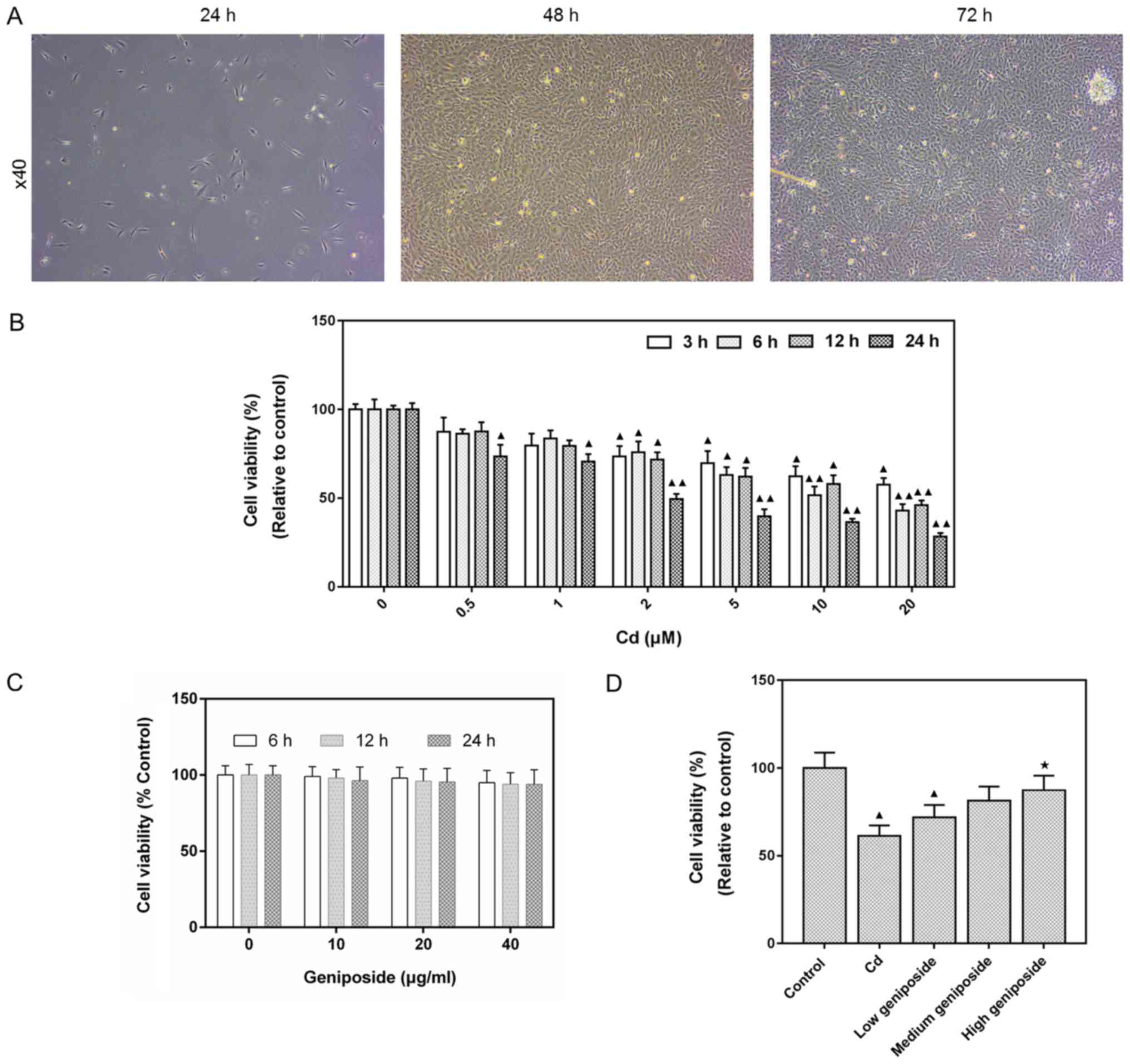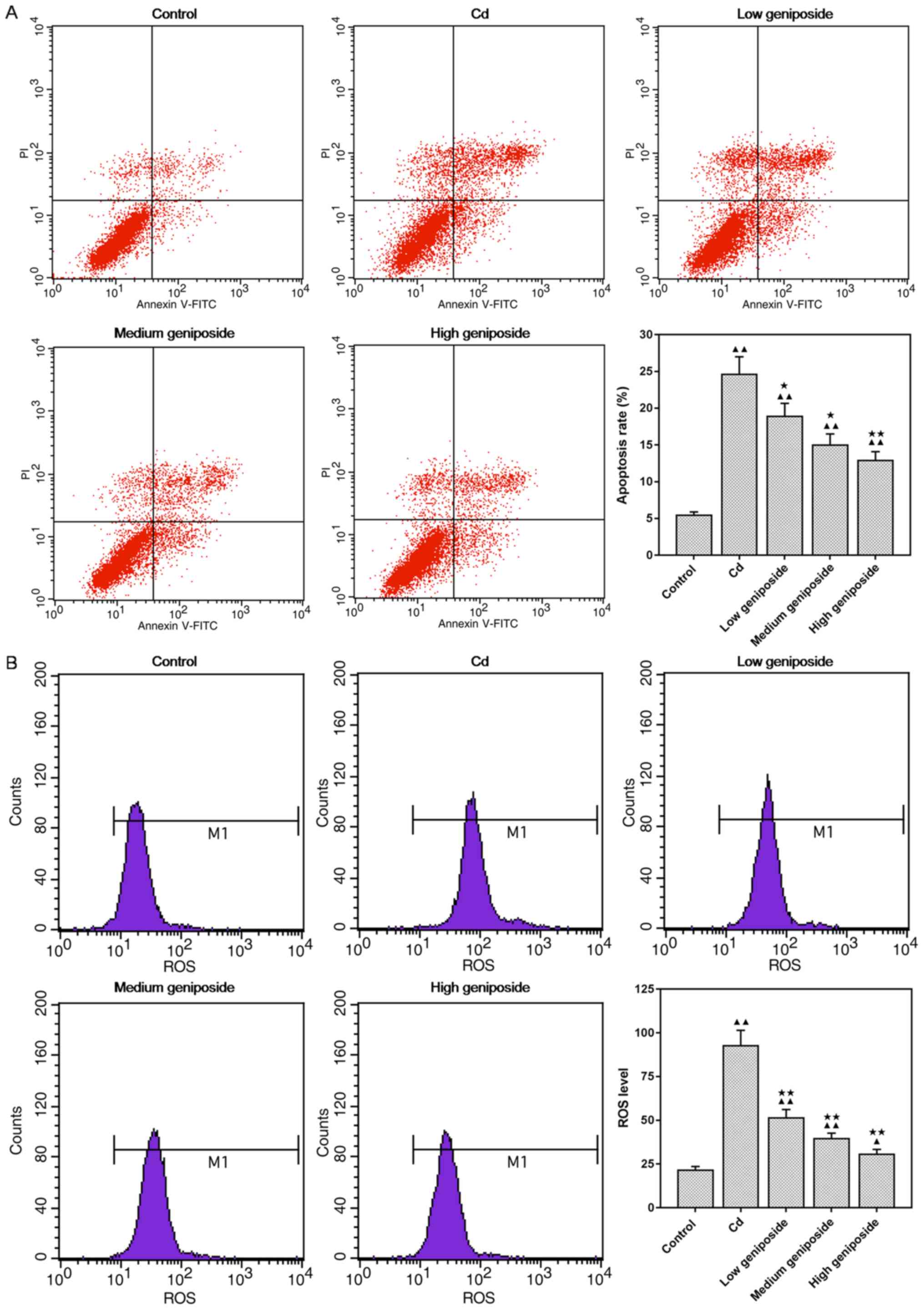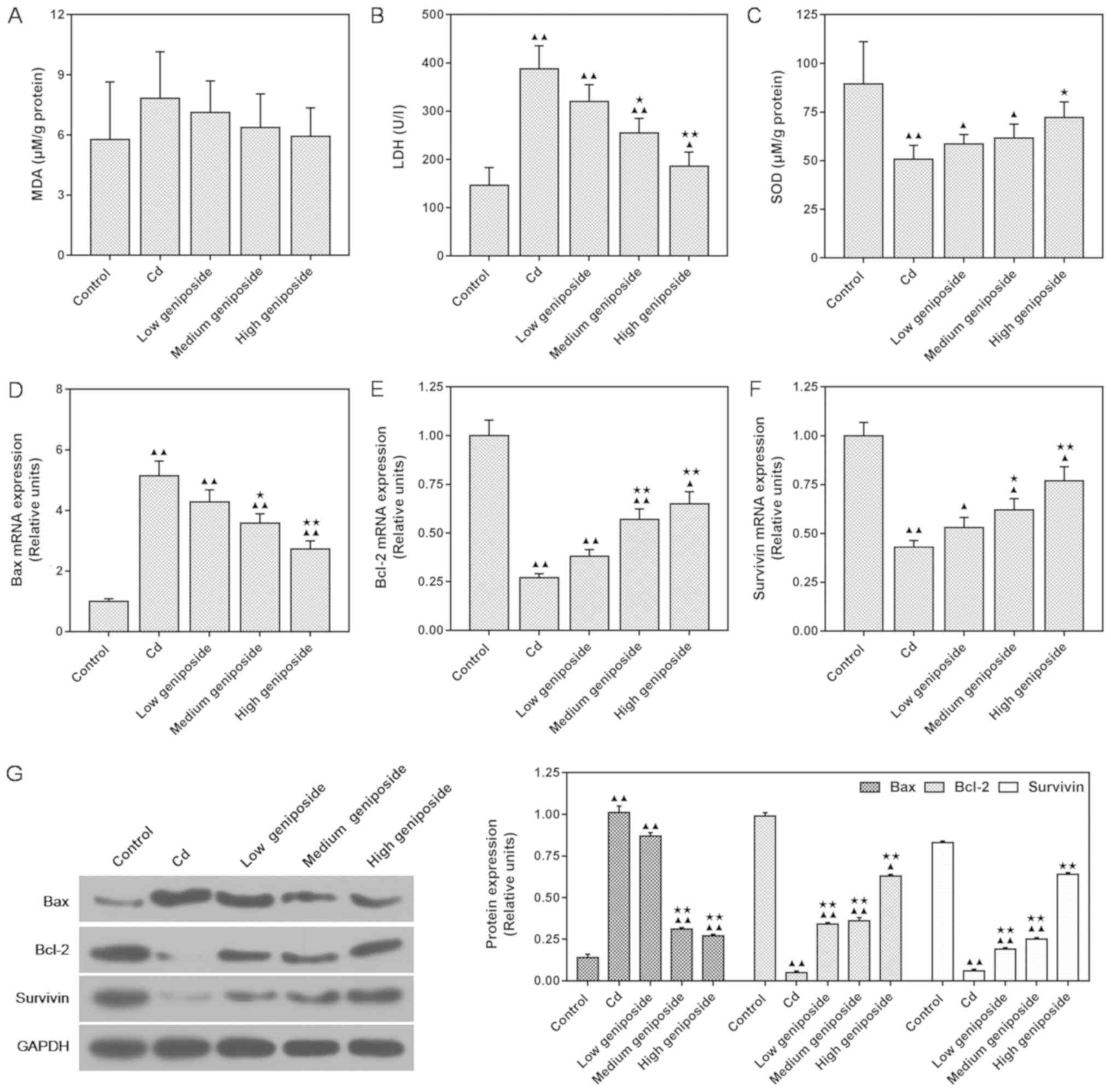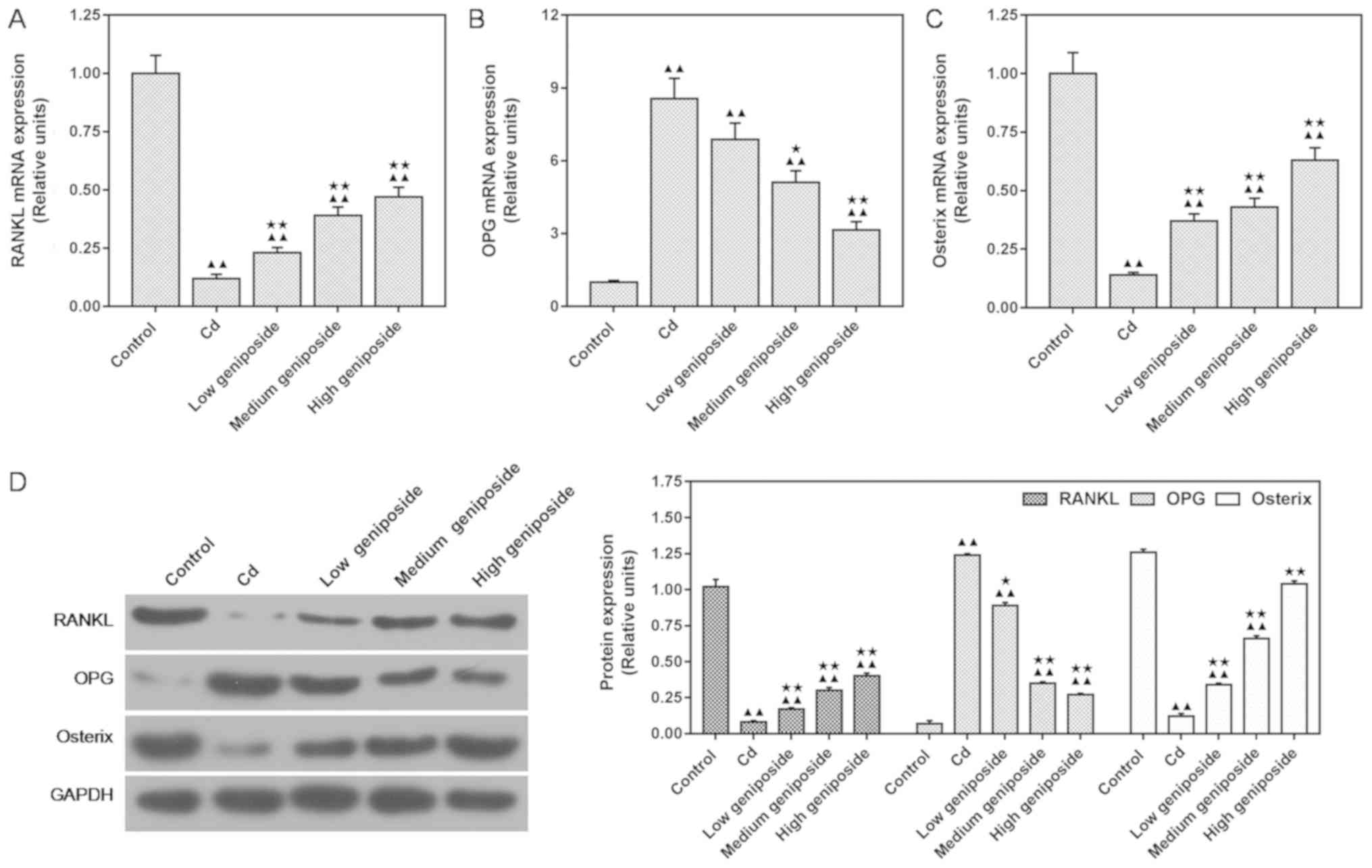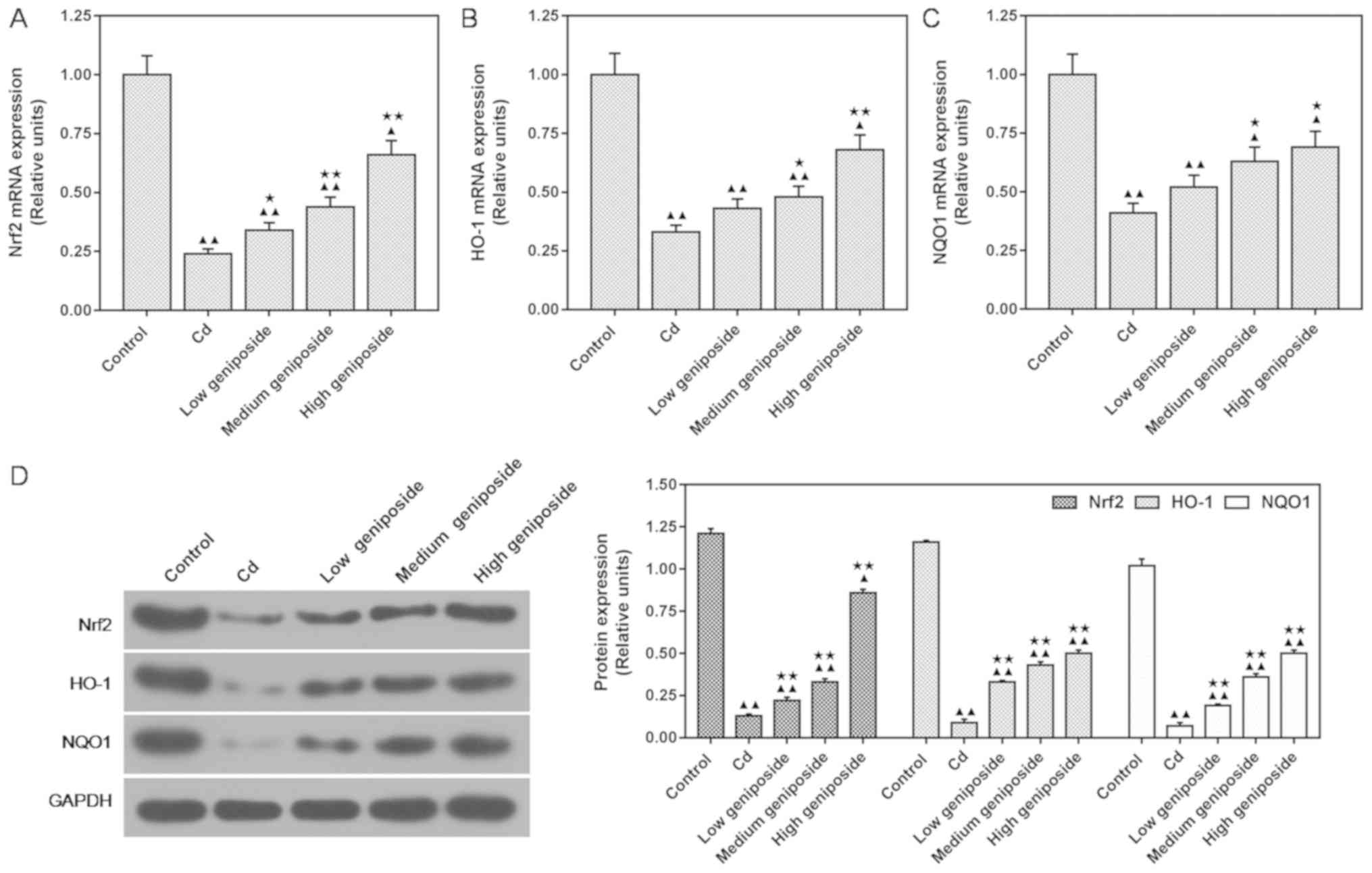|
1
|
Sato K, Iwamasa T, Tsuru T and Takeuchi T:
An ultrastructural study of chronic cadmium chloride-induced
neuropathy. Acta Neuropathol. 41:185–190. 1978. View Article : Google Scholar : PubMed/NCBI
|
|
2
|
Sakata S, Iwami K, Enoki Y, Kohzuki H,
Shimizu S, Matsuda M and Moriyama T: Effects of cadmium on in vitro
and in vivo erythropoiesis: Erythroid progenitor cells (CFU-E),
iron and erythropoietin in cadmium-induced iron deficiency anemia.
Exp Hematol. 16:581–587. 1988.PubMed/NCBI
|
|
3
|
Blakley BR: Humoral immunity in aged mice
exposed to cadmium. Can J Vet Res. 52:291–292. 1988.PubMed/NCBI
|
|
4
|
Saygi S, Deniz G, Kutsal O and Vural N:
Chronic effects of cadmium on kidney, liver, testis and fertility
of male rats. Biol Trace Elem Res. 31:209–214. 1991. View Article : Google Scholar : PubMed/NCBI
|
|
5
|
Sakamoto M, Itai T and Murata K: Effects
of prenatal methylmercury exposure: From minamata disease to
environmental health studies. Nihon Eiseigaku Zasshi. 72:140–148.
2017.(In Japanese). View Article : Google Scholar : PubMed/NCBI
|
|
6
|
Morikawa Y, Nakagawa H, Tabata M, Nishijo
M, Senma M, Kitagawa Y, Kawano S, Teranishi H and Kido T: Study of
an outbreak of itai-itai disease. Nihon Eiseigaku Zasshi.
46:1057–1062. 1992.(In Japanese). View Article : Google Scholar : PubMed/NCBI
|
|
7
|
Kong YY, Yoshida H, Sarosi I, Tan HL,
Timms E, Capparelli C, Morony S, Oliveira-dos-Santos AJ, Van G,
Itie A, et al: OPGL is a key regulator of osteoclastogenesis,
lymphocyte development and lymph-node organogenesis. Nature.
397:315–323. 1999. View
Article : Google Scholar : PubMed/NCBI
|
|
8
|
Bhattacharyya MH, Whelton BD, Stern PH and
Peterson DP: Cadmium accelerates bone loss in ovariectomized mice
and fetal rat limb bones in culture. Proc Natl Acad Sci USA.
85:8761–8765. 1988. View Article : Google Scholar : PubMed/NCBI
|
|
9
|
WHO, . Environmental Health Criteria.
Cadmium-Environmental Aspects. 135:134–136. 1992.
|
|
10
|
Martineau C, Abed E, Medina G, Jomphe LA,
Mantha M, Jumarie C and Moreau R: Involvement of transient receptor
potential melastatin-related 7 (TRPM7) channels in cadmium uptake
and cytotoxicity in MC3T3-E1 osteoblasts. Toxicol Lett.
199:357–363. 2010. View Article : Google Scholar : PubMed/NCBI
|
|
11
|
Kawamura J, Yoshida O, Nishino K and
Itokawa Y: Disturbances in kidney functions and calcium and
phosphate metabolism in cadmium-poisoned rats. Nephron. 20:101–110.
1978. View Article : Google Scholar : PubMed/NCBI
|
|
12
|
Shinichi S and Kiyoshi N: Effects of
vitamin D on calcium and bone metabolism. Clin Calcium. 13:863–868.
2003.(In Japanese). PubMed/NCBI
|
|
13
|
Wang C and Bhattacharyya MH: Effect of
cadmium on bone calcium and 45Ca in nonpregnant mice on a
calcium-deficient diet: Evidence of direct effect of cadmium on
bone. Toxicol Appl Pharmacol. 120:228–239. 1993. View Article : Google Scholar : PubMed/NCBI
|
|
14
|
Brama M, Politi L, Santini P, Migliaccio S
and Scandurra R: Cadmium-induced apoptosis and necrosis in human
osteoblasts: Role of caspases and mitogen-activated protein kinases
pathways. J Endocrinol Invest. 35:198–208. 2012.PubMed/NCBI
|
|
15
|
Wallin M, Barregard L, Sallsten G, Lundh
T, Karlsson MK, Lorentzon M, Ohlsson C and Mellström D: Low-level
cadmium exposure is associated with decreased bone mineral density
and increased risk of incident fractures in elderly men: The MrOS
Sweden study. J Bone Miner Res. 31:732–741. 2016. View Article : Google Scholar : PubMed/NCBI
|
|
16
|
Wilson AK, Cerny EA, Smith BD, Wagh A and
Bhattacharyya MH: Effects of cadmium on osteoclast formation and
activity in vitro. Toxicol Appl Pharmacol. 140:451–460. 1996.
View Article : Google Scholar : PubMed/NCBI
|
|
17
|
Chen X, Zhu G, Gu S, Jin T and Shao C:
Effects of cadmium on osteoblasts and osteoclasts in vitro. Environ
Toxicol Pharmacol. 28:232–236. 2009. View Article : Google Scholar : PubMed/NCBI
|
|
18
|
Coonse KG, Coonts AJ, Morrison EV and
Heggland SJ: Cadmium induces apoptosis in the human osteoblast-like
cell line Saos-2. J Toxicol Environ Health A. 70:575–581. 2007.
View Article : Google Scholar : PubMed/NCBI
|
|
19
|
Yang CF, Shen HM, Shen Y, Zhuang ZX and
Ong CN: Cadmium-induced oxidative cellular damage in human fetal
lung fibroblasts (MRC-5 cells). Environ Health Perspect.
105:712–716. 1997. View Article : Google Scholar : PubMed/NCBI
|
|
20
|
Thompson J and Bannigan J: Cadmium: Toxic
effects on the reproductive system and the embryo. Reprod Toxicol.
25:304–315. 2008. View Article : Google Scholar : PubMed/NCBI
|
|
21
|
Joseph P: Mechanisms of cadmium
carcinogenesis. Toxicol Appl Pharmacol. 238:272–279. 2009.
View Article : Google Scholar : PubMed/NCBI
|
|
22
|
Bertin G and Averbeck D: Cadmium: Cellular
effects, modifications of biomolecules, modulation of DNA repair
and genotoxic consequences (a review). Biochimie. 88:1549–1559.
2006. View Article : Google Scholar : PubMed/NCBI
|
|
23
|
López E, Arce C, Oset-Gasque MJ, Cañadas S
and Gonzalez MP: Cadmium induces reactive oxygen species generation
and lipid peroxidation in cortical neurons in culture. Free Radic
Biol Med. 40:940–951. 2006. View Article : Google Scholar : PubMed/NCBI
|
|
24
|
Koo HJ, Lim KH, Jung HJ and Park EH:
Anti-inflammatory evaluation of gardenia extract, geniposide and
genipin. J Ethnopharmacol. 103:496–500. 2006. View Article : Google Scholar : PubMed/NCBI
|
|
25
|
Liu E, Han L, Wang J, He W, Shang H, Gao X
and Wang T: Eucommia ulmoides bark protects against renal injury in
cadmium-challenged rats. J Med Food. 15:307–314. 2012. View Article : Google Scholar : PubMed/NCBI
|
|
26
|
Yin F, Liu J, Zheng X, Guo L and Xiao H:
Geniposide induces the expression of heme oxygenase-1 via
PI3K/Nrf2-signaling to enhance the antioxidant capacity in primary
hippocampal neurons. Biol Pharm Bull. 33:1841–1846. 2010.
View Article : Google Scholar : PubMed/NCBI
|
|
27
|
Wang SW, Lai CY and Wang CJ: Inhibitory
effect of geniposide on aflatoxin B1-induced DNA repair synthesis
in primary cultured rat hepatocytes. Cancer Lett. 65:133–137. 1992.
View Article : Google Scholar : PubMed/NCBI
|
|
28
|
Koo HJ, Lee S, Shin KH, Kim BC, Lim CJ and
Park EH: Geniposide, an anti-angiogenic compound from the fruits of
Gardenia jasminoides. Planta Med. 70:467–469. 2004. View Article : Google Scholar : PubMed/NCBI
|
|
29
|
Wang J, Hou J, Zhang P, Li D, Zhang C and
Liu J: Geniposide reduces inflammatory responses of oxygen-glucose
deprived rat microglial cells via inhibition of the TLR4 signaling
pathway. Neurochem Res. 37:2235–2248. 2012. View Article : Google Scholar : PubMed/NCBI
|
|
30
|
Wang J, Li D, Hou J and Lei H: Protective
effects of geniposide and ginsenoside Rg1 combination treatment on
rats following cerebral ischemia are mediated via microglial
microRNA-155-5p inhibition. Mol Med Rep. 17:3186–3193.
2018.PubMed/NCBI
|
|
31
|
Chang CH, Wu JB, Yang JS, Lai YJ, Su CH,
Lu CC and Hsu YM: The suppressive effects of geniposide and genipin
on helicobacter pylori infections in vitro and in vivo. J Food Sci.
82:3021–3028. 2017. View Article : Google Scholar : PubMed/NCBI
|
|
32
|
Ha H, Ho J, Shin S, Kim H, Koo S, Kim IH
and Kim C: Effects of eucommiae cortex on osteoblast-like cell
proliferation and osteoclast inhibition. Arch Pharm Res.
26:929–936. 2003. View Article : Google Scholar : PubMed/NCBI
|
|
33
|
Lin J, Fan YJ, Mehl C, Zhu JJ, Chen H, Jin
LY, Xu JH and Wang HM: Eucommia ulmoides Oliv. antagonizes
H2O2-induced rat osteoblastic MC3T3-E1
apoptosis by inhibiting expressions of caspases 3, 6, 7 and 9. J
Zhejiang Univ Sci B. 12:47–54. 2011. View Article : Google Scholar : PubMed/NCBI
|
|
34
|
Liu J, Yin F, Zheng X, Jing J and Hu Y:
Geniposide, a novel agonist for GLP-1 receptor, prevents PC12 cells
from oxidative damage via MAP kinase pathway. Neurochem Int.
51:361–369. 2007. View Article : Google Scholar : PubMed/NCBI
|
|
35
|
Chen Y, Zhang H, Li YX, Cai L, Huang J,
Zhao C, Jia L, Buchanan R, Yang T and Jiang LJ: Crocin and
geniposide profiles and radical scavenging activity of gardenia
fruits (Gardenia jasminoides Ellis) from different cultivars and at
the various stages of maturation. Fitoterapia. 81:269–273. 2010.
View Article : Google Scholar : PubMed/NCBI
|
|
36
|
Lee P, Lee J, Choi SY, Lee SE, Lee S and
Son D: Geniposide from Gardenia jasminoides attenuates neuronal
cell death in oxygen and glucose deprivation-exposed rat
hippocampal slice culture. Biol Pharm Bull. 29:174–176. 2006.
View Article : Google Scholar : PubMed/NCBI
|
|
37
|
Cheng F, Ma C, Sun L, Zhang X, Zhai C, Li
C, Zhang S, Ren B, Liu S, Liu S, et al: Synergistic neuroprotective
effects of Geniposide and ursodeoxycholic acid in
hypoxia-reoxygenation injury in SH-SY5Y cells. Exp Ther Med.
15:320–326. 2018.PubMed/NCBI
|
|
38
|
Hu KH, Li WX, Sun MY, Zhang SB, Fan CX, Wu
Q, Zhu W and Xu X: Cadmium induced apoptosis in MG63 cells by
increasing ROS, activation of p38 MAPK and inhibition of ERK 1/2
Pathways. Cell Physiol Biochem. 36:642–654. 2015. View Article : Google Scholar : PubMed/NCBI
|
|
39
|
Pathak N and Khandelwal S: Influence of
cadmium on murine thymocytes: Potentiation of apoptosis and
oxidative stress. Toxicol Lett. 165:121–132. 2006. View Article : Google Scholar : PubMed/NCBI
|
|
40
|
Livak KJ and Schmittgen TD: Analysis of
relative gene expression data using real-time quantitative PCR and
the 2(-Delta Delta C(T)) method. Methods. 25:402–408. 2001.
View Article : Google Scholar : PubMed/NCBI
|
|
41
|
Theoleyre S, Wittrant Y, Tat SK, Fortun Y,
Redini F and Heymann D: The molecular triad OPG/RANK/RANKL:
Involvement in the orchestration of pathophysiological bone
remodeling. Cytokine Growth Factor Rev. 15:457–475. 2004.
View Article : Google Scholar : PubMed/NCBI
|
|
42
|
Roodman GD: Treatment strategies for bone
disease. Bone Marrow Transplant. 40:1139–1146. 2007. View Article : Google Scholar : PubMed/NCBI
|
|
43
|
Levesque M, Martineau C, Jumarie C and
Moreau R: Characterization of cadmium uptake and cytotoxicity in
human osteoblast-like MG-63 cells. Toxicol Appl Pharmacol.
231:308–317. 2008. View Article : Google Scholar : PubMed/NCBI
|
|
44
|
Nakashima K, Zhou X, Kunkel G, Zhang Z,
Deng JM, Behringer RR and de Crombrugghe B: The novel zinc
finger-containing transcription factor osterix is required for
osteoblast differentiation and bone formation. Cell. 108:17–29.
2002. View Article : Google Scholar : PubMed/NCBI
|
|
45
|
Valois AA and Webster WS: The choroid
plexus as a target site for cadmium toxicity following chronic
exposure in the adult mouse: An ultrastructural study. Toxicology.
55:193–205. 1989. View Article : Google Scholar : PubMed/NCBI
|
|
46
|
Jamall IS, Naik M, Sprowls JJ and
Trombetta LD: A comparison of the effects of dietary cadmium on
heart and kidney antioxidant enzymes: evidence for the greater
vulnerability of the heart to cadmium toxicity. J Appl Toxicol.
9:339–345. 1989. View Article : Google Scholar : PubMed/NCBI
|
|
47
|
Liu E, Han L, Wang J, He W Shang H, Gao X
and Wang T: Eucommia ulmoides bark protects against renal injury in
cadmium-challenged rats. J Med Food. 15:307–314. 2012. View Article : Google Scholar : PubMed/NCBI
|
|
48
|
Pan YX, Luo Z, Zhuo MQ, Wei CC, Chen GH
and Song YF: Oxidative stress and mitochondrial dysfunction
mediated Cd-induced hepatic lipid accumulation in zebrafish Danio
rerio. Aquat Toxicol. 199:12–20. 2018. View Article : Google Scholar : PubMed/NCBI
|
|
49
|
Mao T, Han C, Wei B, Zhao L, Zhang Q, Deng
R, Liu J, Luo Y and Zhang Y: Protective effects of quercetin
against cadmium chloride-induced oxidative injury in goat sperm and
zygotes. Biol Trace Elem Res. 185:344–355. 2018. View Article : Google Scholar : PubMed/NCBI
|
|
50
|
Wongmekiat O, Peerapanyasut W and Kobroob
A: Catechin supplementation prevents kidney damage in rats
repeatedly exposed to cadmium through mitochondrial protection.
Naunyn Schmiedebergs Arch Pharmacol. 391:385–394. 2018. View Article : Google Scholar : PubMed/NCBI
|
|
51
|
Qu Y, Liu Y, Chen L and Zhu Y, Xiao X,
Wang D and Zhu Y: Nobiletin prevents cadmium-induced neuronal
apoptosis by inhibiting reactive oxygen species and modulating
JNK/ERK1/2 and Akt/mTOR networks in rats. Neurol Res. 40:211–220.
2018. View Article : Google Scholar : PubMed/NCBI
|
|
52
|
Kováčik J, Dresler S, Peterková V and
Babula P: Metal-induced oxidative stress in terrestrial
macrolichens. Chemosphere. 203:402–409. 2018. View Article : Google Scholar : PubMed/NCBI
|
|
53
|
Varricchi G, Ameri P, Cadeddu C, Ghigo A,
Madonna R, Marone G, Mercurio V, Monte I, Novo G, Parrella P, et
al: Antineoplastic drug-induced cardiotoxicity: A redox
perspective. Front Physiol. 9:1672018. View Article : Google Scholar : PubMed/NCBI
|
|
54
|
Kim J, Kwon WS, Rahman MS, Lee JS, Yoon
SJ, Park YJ, You YA and Pang MG: Effect of sodium fluoride on male
mouse fertility. Andrology. 3:544–551. 2015. View Article : Google Scholar : PubMed/NCBI
|
|
55
|
Chatterjee S, Kundu S, Sengupta S and
Bhattacharyya A: Divergence to apoptosis from ROS induced cell
cycle arrest: Effect of cadmium. Mutat Res. 663:22–31. 2009.
View Article : Google Scholar : PubMed/NCBI
|
|
56
|
Wang SH, Shih YL, Kuo TC, Ko WC and Shih
CM: Cadmium toxicity toward autophagy through ROS-activated
GSK-3beta in mesangial cells. Toxicol Sci. 108:124–131. 2009.
View Article : Google Scholar : PubMed/NCBI
|
|
57
|
Sporn MB and Liby KT: NRF2 and cancer: The
good, the bad and the importance of context. Nat Rev Cancer.
12:564–571. 2012. View Article : Google Scholar : PubMed/NCBI
|
|
58
|
Ishii T, Itoh K, Takahashi S, Sato H,
Yanagawa T, Katoh Y, Bannai S and Yamamoto M: Transcription factor
Nrf2 coordinately regulates a group of oxidative stress-inducible
genes in macrophages. J Biol Chem. 275:16023–16029. 2000.
View Article : Google Scholar : PubMed/NCBI
|
|
59
|
Lee IT, Wang SW, Lee CW, Chang CC, Lin CC,
Luo SF and Yang CM: Lipoteichoic acid induces HO-1 expression via
the TLR2/MyD88/c-Src/NADPH oxidase pathway and Nrf2 in human
tracheal smooth muscle cells. J Immunol. 181:5098–5110. 2008.
View Article : Google Scholar : PubMed/NCBI
|
|
60
|
Nguyen T, Sherratt PJ and Pickett CB:
Regulatory mechanisms controlling gene expression mediated by the
antioxidant response element. Annu Rev Pharmacol Toxicol.
43:233–260. 2003. View Article : Google Scholar : PubMed/NCBI
|
|
61
|
Khor TO, Huang MT, Prawan A, Liu Y, Hao X,
Yu S, Cheung WK, Chan JY, Reddy BS, Yang CS and Kong AN: Increased
susceptibility of Nrf2 knockout mice to colitis-associated
colorectal cancer. Cancer Prev Res (Phila). 1:187–191. 2008.
View Article : Google Scholar : PubMed/NCBI
|















